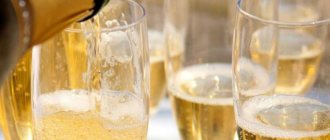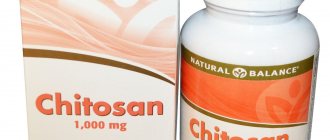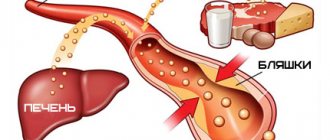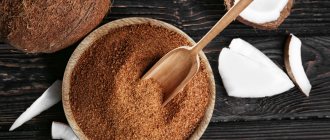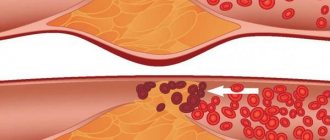It is known that cholesterol increases due to excessive consumption of animal fats. In this regard, the question of the content of lipids harmful to blood vessels in fat is of interest. Judging by the fact that this product is very fatty, it should occupy one of the leading positions among other sources of bad cholesterol.
But is this really so, we still need to figure it out. People with high cholesterol levels need to carefully monitor their diet and be especially careful with foods containing animal fats. But, as it turned out, the combination of “fat and cholesterol” in moderate quantities does not change the content of harmful lipids in the blood.
The benefits of lard for the body
Don’t forget about the beneficial properties of pork fat, because it contains not only vitamins (E, A and D), but also arachidonic acid. This substance is able to regulate cell activity, normalize hormonal balance and effectively cleanse the walls of blood vessels from lipoprotein deposits.
Since ancient times, lard has been widely used in folk medicine as a cure for various diseases. Benefits have been proven for both internal and external use.
A compress of rendered pork fat quickly relieves joint pain, and damage to ligaments and bones after injuries (fractures) is well eliminated by rubbing the sore spot with a mixture of fat and salt. In addition, pork fat is excellent for relieving toothache, curing eczema and mastitis.
Should you exclude lard from your diet?
It is important to understand that fats are necessary for human health! It is a mistake to limit or eliminate them while continuing to consume carbohydrates in large quantities. The basis of a healthy, nutritious diet consists of proteins, healthy fats and complex carbohydrates. However, it is necessary to maintain a balance of all these substances and take into account your individual calorie needs.
Photo: istockphoto.com
How much cholesterol is in lard?
About 70-75% of cholesterol is produced by the liver and about 25% comes from food.
You can often hear the opinion that bacon is a harmful product, with an excessive content of lipids, but this is not at all true. The cholesterol content does not exceed the permissible limits. 100 grams of salted lard contains about 90-100 mg, which is negligible compared to most other products. Lard is able to neutralize the effect of “bad” cholesterol (LDL), and over time, clean capillaries and cells from the accumulation of fat.
In addition, the product increases the level of good cholesterol, prevents vascular damage, strengthens the immune system and reduces the risk of inflammatory diseases.
Cholesterol content in fats of various animals:
| Products | Amount of cholesterol in mg per 100 g of product |
| Beef fat | 140 |
| Lard | 100 |
| Lamb bacon | 90 |
| Rabbit meat | 125 |
| horsemeat | 68-70 |
| Duck fat | 90 |
| Chicken | 50 |
| Veal | 110 |
As can be seen from this table, beef contains significantly more harmful compounds than pork, but the record holder in this case is beef and chicken liver. They contain a record amount of cholesterol - more than 400 and 800 mg for every 100 grams of raw materials, respectively.
Let's sum it up
In order to prevent an increase in cholesterol levels or reduce it, it is important to follow a proper diet, limiting foods containing fats. Lard is a fat-containing ingredient, however, this is not a reason for a categorical ban on its use in the diet.
Even nutritionists are inclined to believe that properly prepared, high-quality lard is even beneficial for health. The main thing is to have a sense of proportion when consuming it, and also to coordinate its intake with other consumed foods so that the calorie content and amount of fat do not exceed the permissible daily allowance.
Is it possible to eat lard if you have high cholesterol?
First, it’s worth understanding what low-density lipoproteins (LDL) are and how they are related to the disorders mentioned. LDL is a type of cholesterol, the most atherogenic fraction, which provides the cellular structure of the body with the necessary energy, but when the permissible values in the blood are exceeded, it settles on the walls of blood vessels, impairing blood circulation. Accordingly, it contributes to the development of diabetes, atherosclerosis, hypertension and stroke.
Of course, in this case, the consumption of animal fat should be limited, but you cannot completely abandon it. Thanks to arachidonic acid, this unique ingredient allows you to speed up fat metabolism and cleanse blood vessels of lipid deposits.
Recent data obtained by scientists prove that moderate consumption of lard reduces the amount of bad cholesterol in the blood. But do not forget that you can eat no more than 40 grams of it daily. Only salted lard can bring maximum benefit to the body, since during heat treatment (frying or smoking) dangerous carcinogens are formed in it.
The main condition is to eat it immediately before the main meal in order to activate the beneficial enzymes it contains.
This principle can be applied even when following a weight loss diet. A small piece of salted bacon eaten before breakfast quickly saturates the body with energy, dulls hunger, and has a positive effect on LDL levels. That is why doctors not only do not prohibit, but also strongly recommend, eating such fats with high cholesterol levels, but in very small portions.
How to choose a quality product
The most beneficial components are preserved in salted pork lard, the optimal daily dose of which for a healthy person is around 30 grams. Since its melting point is higher than that of butter or margarine, this means that it retains much more useful substances, however, the optimal fats for consumption from the point of view of a cholesterol diet are still plant products that are absolutely devoid of cholesterol.
It is also necessary to answer the question: is it possible to eat smoked lard if you have high cholesterol?
This type is the most harmful because it contains carcinogenic substances, so it is advisable to avoid such a product. It is not recommended to eat old rancid lard as shown in the photo below because it is not only, to put it mildly, tasteless, but can also cause indigestion.
Old lard
Below are some useful recommendations that will help you choose a high-quality and healthy product:
- The quality of lard from female and male pigs is different. Boars are castrated to remove the smell of urea that is released during heat treatment, so use a lighter or matches before purchasing;
- Pay attention to the appearance. After processing with a blowtorch, the skin has a smoky appearance and aroma, traces of bristles remain - this is a guarantee of domestic production. Foreign, as a rule, with a smooth, beautiful skin;
- White lard has a lot of dense fat, so there is no environment for the development of pathogenic microflora, and in pink lard with meat streaks, parasites and microorganisms are much more common. The pink color indicates that the pig was bled incorrectly when slaughtering it. Please note that neither salting nor freezing can exclude the presence of the causative agent of trichinosis;
- In markets and stores, products sold are checked and then stamped. If there is no mark on the skin, it is better not to buy such a product;
- Imported lard is significantly inferior in quality to domestic lard since pigs are raised on hormonal drugs and dietary supplements. Signs of which are thin layers similar to rubber, without a delicate fatty layer, which seems to melt in the hands. Pressing does not leave any holes or dents on a domestic product. The homemade product is, as a rule, thick, and thin greasy layers indicate farm production, which is catching up with its foreign counterparts in terms of the amount of harmful biofeeds in the pig diet. You should always give preference to homemade meat;
- The fresher the product, the healthier it is. Often in stores and even in markets you can find lard already salted with various spices, but this can be a disguise for yellowness and staleness. It’s better to take raw (white) and then cook it yourself. The cholesterol content in the final product directly depends on the processing method;
- The part of the animal’s body from which the fat was cut out is of great importance. The best thing is what is on the back (loin) - it has a delicate taste and softness. The product cut from the abdominal part is no less valuable, but usually the layer will be thinner with meat inclusions. The toughest layers are on the cheeks and neck as these parts are in constant motion;
- When buying at the bazaar, when the buyer has the opportunity to try, do not limit yourself to a piece only from the skin side, which is usually offered by sellers. Try from the entire surface. A fresh product has a characteristic sheen on the skin; it should stick to it while the product is still warm;
- The color of the skin is also important. The light yellow shade scorched by straw is more valuable. If the color is dark or closer to black-brown, then this indicates that the processing was carried out using a blowtorch and its taste is inferior to the first option.
Lard spread in Ukrainian
Proper preparation and consumption
As mentioned above, it is salted lard that brings the greatest benefit, while fried or smoked lard will do nothing but harm. It should only be salted fresh, at the rate of 4 tbsp. spoons of salt per 1 kg of raw materials. Additionally, you can add a little pepper, garlic and cumin, which will not only improve the taste, but also increase the benefits for the body.
Lard can be salted either dry or using a special brine (marinade). In both cases, fat will be useful for reducing the level of harmful lipids. It is better to eat it with a small piece of rye bread, but in no case with a loaf or bun. You should not eat frozen bacon, because although it tastes better, it is absorbed and digested much worse. Salted lard can be lightly boiled, all the substances necessary for the body will be preserved.
Daily norm
An example of the daily requirement of lard for high cholesterol (about 25 grams).
The daily norm for a healthy person can vary from 40 to 80 grams. With high cholesterol, this figure should be reduced to 20-35 grams per day.
Harmful properties
Why, then, if a lot of positive qualities of bacon have been proven, did the question of its harm to health arise in principle? The fact is that lard, like any other dish, in addition to its beneficial properties, also has some negative characteristics that call its use into question.
Mostly its negative characteristics come down to determining the norms of its consumption and method of preparation. Most often, everyone’s favorite product is consumed in salted form. Salt is a spice that should be used by any person in limited quantities, as it tends to be deposited in blood vessels and joints, causing damage to the body. When consuming lard, it is important to consider the amount of salt that enters the body with this dish. At the same time, it is important to reduce the amount of this spice in other foods consumed so that its total daily amount does not exceed acceptable standards.
The benefits of lard are questionable if the product is old and its shelf life is more than six months. In this case, the bacon acquires a yellowish tint, accumulates carcinogens that are harmful to the body, and is also more difficult to digest and absorb in the body.
The benefits of heat-treated lard are also considered controversial. Fried bacon, like other dishes prepared in this way, is harmful to the body and hard on the stomach. In addition, during frying, the beneficial properties of the product are lost, and the amount of negative cholesterol components increases. Lard subject to smoking has similar characteristics, especially if the cooking process was carried out in an industrial environment. Before smoking, the goods are treated with special solutions of synthetic origin to enhance taste characteristics, which negatively affect not only the human vascular system, but also the functionality of all organs.
Possible harm and contraindications
Most experts believe that moderate consumption of pork fat cannot cause harm, and this is absolutely true. In small quantities (and even in significant quantities, with one-time use), it does not have any negative effect. The only limitation is age, because lard should not be eaten by children (under 3 years old) and elderly people (over 60 years old) .
Salted lard is easily digested and does not cause a feeling of heaviness or discomfort in the stomach. The exception is if a person has an acute gastrointestinal ulcer. This is the only contraindication for use. It is important to understand that any food, even the healthiest and safest, can be harmful if eaten in unlimited quantities. This applies not only to bacon, but also to eggs, milk, fermented milk and meat products, and fish.
Find out more about our weight loss programs:
Preventing the accumulation of low-density lipoproteins in the body means saving yourself from problems with the heart and blood vessels, as well as... from excess weight. How does this substance affect body weight?
- There is especially a lot of cholesterol in fast food and processed foods. The more fatty, fried and high-calorie foods we eat, the greater our volumes. Trans fats, found in excess in fast food products, Big Macs and French fries, also lead to the development of obesity.
- What happens when we start gaining weight rapidly? Triglyceride and cholesterol levels increase. These compounds are insoluble in water and in blood plasma. In order to get to their “destination”, they must find a mate. Proteins act as a transport vehicle, which, in tandem with fatty alcohol, are converted into lipoproteins. If their density is low, our body will receive nothing but harm.
If the density of lipoproteins is high, they go straight to the liver, from where they then enter the intestines. Bile also comes with them. By getting a lot of bad cholesterol from food (from fast food, processed foods), we increase the load on the liver - it works to the limit of its strength and capabilities, releasing more and more fatty alcohol. As a result, its concentration increases, bile becomes thicker, even viscous, which leads to the formation of hard concretions - in other words, stones.
So there are many dangers that await those who like to eat in fast food restaurants or warm up something hearty and harmful for dinner: these are problems with the heart and blood vessels, heart attacks and strokes, obesity and cholelithiasis. The only thing we can do to help ourselves is to control what we eat and have a healthy lifestyle, which includes proper nutrition.
How do you know if the cholesterol in your blood is higher than normal? Pay attention to how you feel. The following symptoms indicate the need to change your diet:
- fast fatiguability;
- hypertension;
- frequent headaches;
- drowsiness;
- functional disorders of the intestines (diarrhea, constipation);
- poor appetite;
- nervousness.
Selecting high-quality bacon
The key to well-being and good health lies in proper nutrition. Therefore, it is very important to choose the right product so as not to worry about its quality. You should buy only in trusted places, from reliable sellers. Ideally, this could be someone you know who breeds pigs or a large farm. The seller must have a product quality certificate and permission to sell it.
It is worth paying attention to the appearance and smell of raw materials, and tasting them before purchasing. High-quality lard should not be yellow or gray, have an unpleasant odor or a pronounced aroma and taste of pepper and other spices. Thus, unscrupulous sellers try to disguise the shortcomings of poor-quality pickling.
https://www.youtube.com/watch?v=QttQSYTFbhA
Lard: who uses it how?
Lard and lard are different. This is what those who know that different countries have their own “most delicious” recipes for cooking will say. Thus, it is difficult to imagine the Ukrainian version of pork fat without the “company” of garlic or onions. There is no real Hungarian lard without red pepper. And Estonians love smoked products. But, probably, the strangest lard is found among the inhabitants of Chukotka: they consume seal fat, which, however, is very similar to a pork product.
Nutritionists call garlic, onions, red hot peppers, whole grain bread, parsley and sauerkraut the best “companions” for lard. In this combination, pork fat affects the body as an antioxidant, cleanses the liver and blood vessels, and removes excess bile.
Treatment and prevention of vascular diseases
Lard is one of the most popular dishes not only of Ukrainian cuisine, but of many other European nations. Ukrainians, Balts, Germans, without exception, will not refuse a slice of such a delicacy.
In Russia this is one of the favorite products. It is eaten salted, smoked, and added to other dishes, which gives the food a special taste. Everyone loves lard, but few people know what properties it has, what its benefits and harms are, whether there is cholesterol in lard, and if there is, how much cholesterol is in lard. For people suffering from fat or lipid metabolism disorders, knowing this is very important. Control of fat balance is directly related to the choice of food consumed.
Fat in folk medicine
Pork fat was used as a medicine back in Rus'. Some of the ancient recipes have survived to this day. Here are some of the most popular.
For toothache – apply a slice of unsalted lard to the gum near the sore tooth for 20 minutes.
For heel spurs - apply a piece of white fat to the sore spot and secure with a bandage.
For joint pain, apply a paste of ground lard and honey to sore areas at night (wrap with a warm cloth).
For warts - apply a mixture of melted lard (2 parts) and garlic (1 part) to the wart several times a day.
For varicose veins, wrap unsalted slices on painful areas.
For eczema - lubricate with a mixture of lard (2 tbsp), chicken proteins (2 pcs.), nightshade (100 g) and celandine juice (1 l). Before use, the product is infused for 3 days.
For calluses and corns, apply gruel from lard to steamed skin, then rub with pumice.
For back pain, wrap a piece of salted lard and wrap it in a warm scarf.


